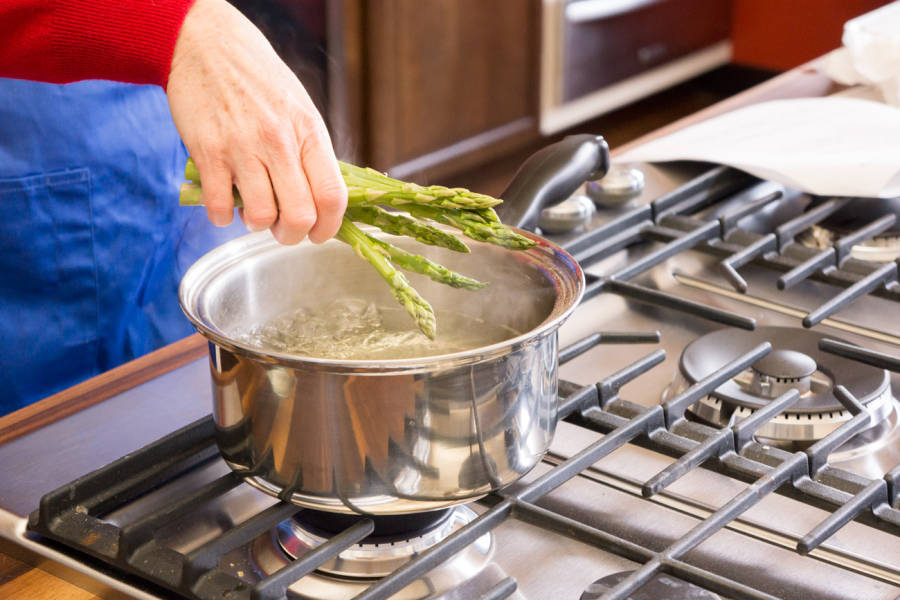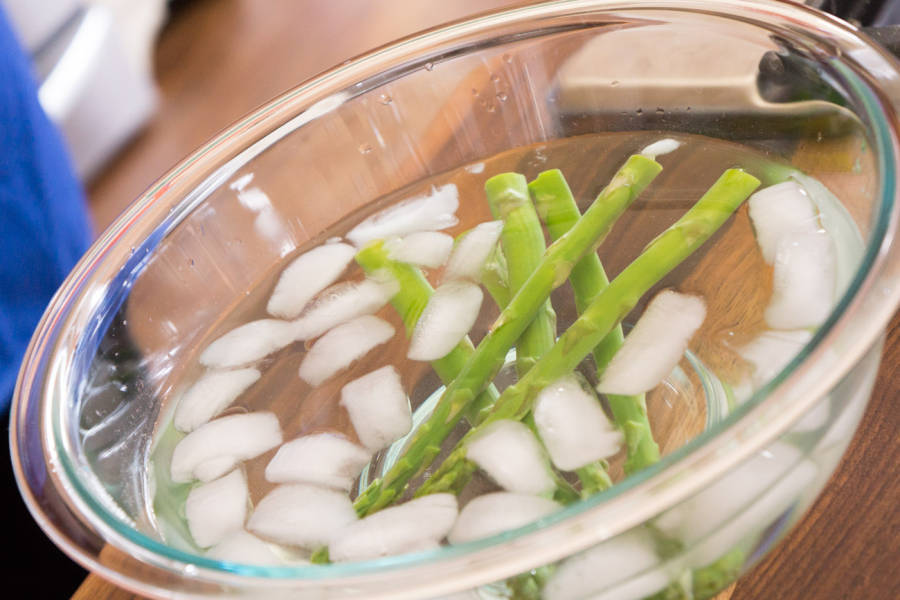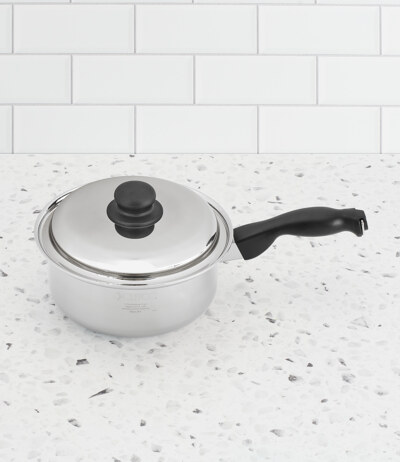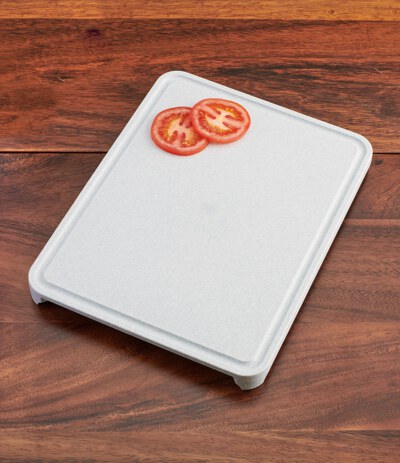The Benefits of Blanching Vegetables
4015 days ago
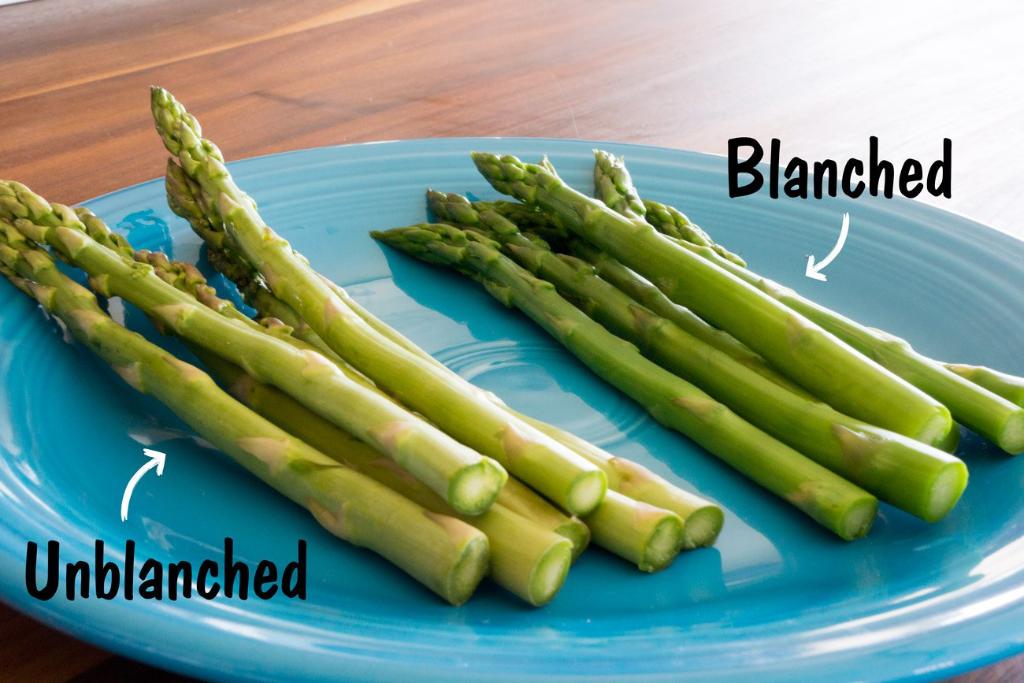
Blanching is derived from the word “blanchir,” which means bleaching or whitening. In the culinary world, it’s a technique that helps remove the skins from things like peaches and tomatoes, or to preserve the color and texture of foods.
Scientifically, blanching stops enzyme actions that can cause loss of flavor, color and texture.
How it’s done is fruits or vegetables are submerged in boiling salt water for anywhere from a couple of seconds to several minutes, depending on their size. They are then removed and shocked in ice water to stop the cooking process.
If you’re going to be freezing vegetables, blanching them first will help preserve their color and texture. For strong tasting vegetables like cabbage and onion, blanching can also tone down the strong taste.
Blanching Asparagus
To blanch asparagus, boil the stalks for 2 or 3 minutes. Remove them and shock them in bowl of water with ice. Remove from the water and refrigerate until completely chilled. You’ll notice that after blanching that the asparagus takes on a brighter green color. It also leaves it crisp, but easier to bite into.
You can serve blanched asparagus cold with a light dressing or just drizzle with olive oil, lemon juice, salt and pepper. It’s a great side for brunch or a light lunch. You can also cut it up and toss into salads or include it as an ingredient in a sandwich wrap.
Blanching Fruit
This method also loosens the skin on fruits for easier peeling. For example, to peel things like tomatoes and peaches, cut an “x” into the top of the fruit using a paring knife and then drop them in to boiling water for a minute or two. Remove them and then quickly drop them in an ice bath. Once cool, remove the fruit and the skin should easily peel off.
As for how much water to use when blanching, a good rule of thumb is to use about one gallon of water per pound of produce. However, you may need more water if you’re going to blanch leafy greens.
